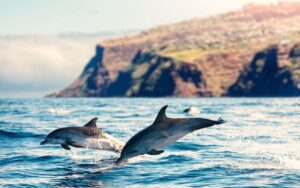
Discover the magic of Fuerteventura and its rich marine life, where dolphins dance in the waves and offer an unforgettable show. This island is not only a paradise for sun and sea lovers, but also a privileged meeting point for those who wish to connect with marine nature, always with the utmost respect for it.
Types of dolphins in Fuerteventura
Bottlenose dolphin (Tursiops truncatus): Known for its proximity to the coast and its interaction with humans, the bottlenose dolphin is characterised by its large size, intelligence and playful behaviour. It is easily recognisable by its robust body and curved dorsal.
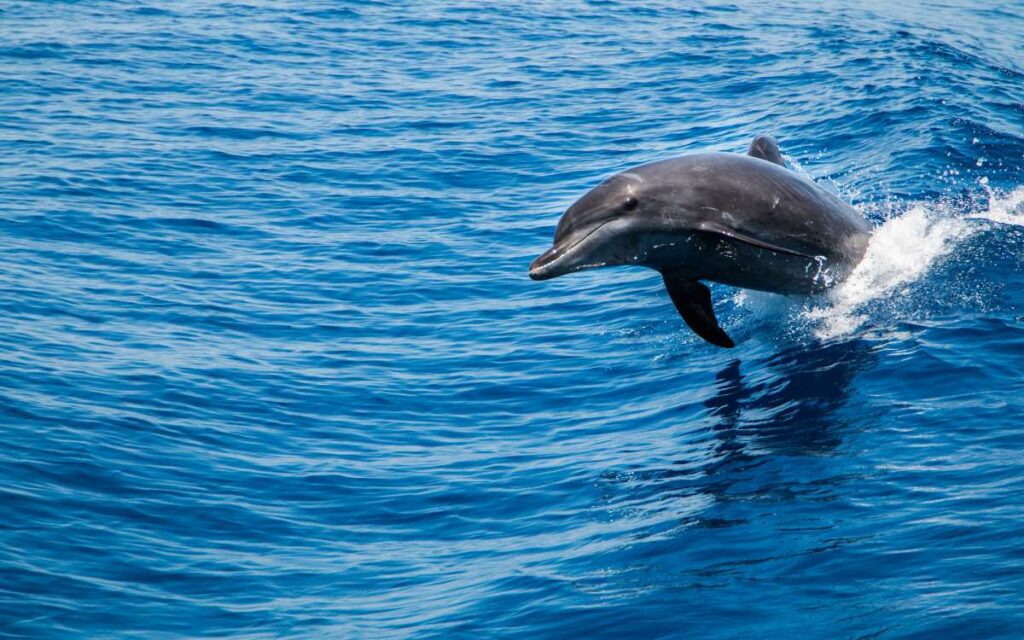
Common Dolphin (Delphinus delphis): This dolphin stands out for its speed and agility in the water, being able to perform spectacular jumps. Its body is slender and has a characteristic colour pattern that makes it easy to identify.
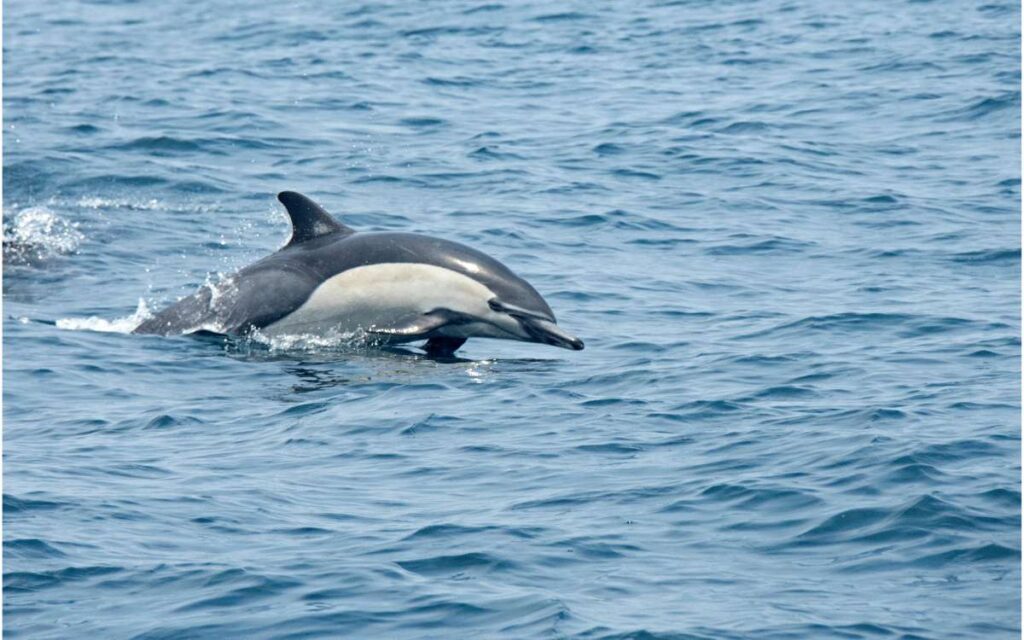
Risso’s dolphin (Grampus griseus): The Risso’s dolphin is notable for its distinctive appearance, with a more robust body and bulbous head. Their skin, often scarred, tells the story of their interactions and the passage of time.
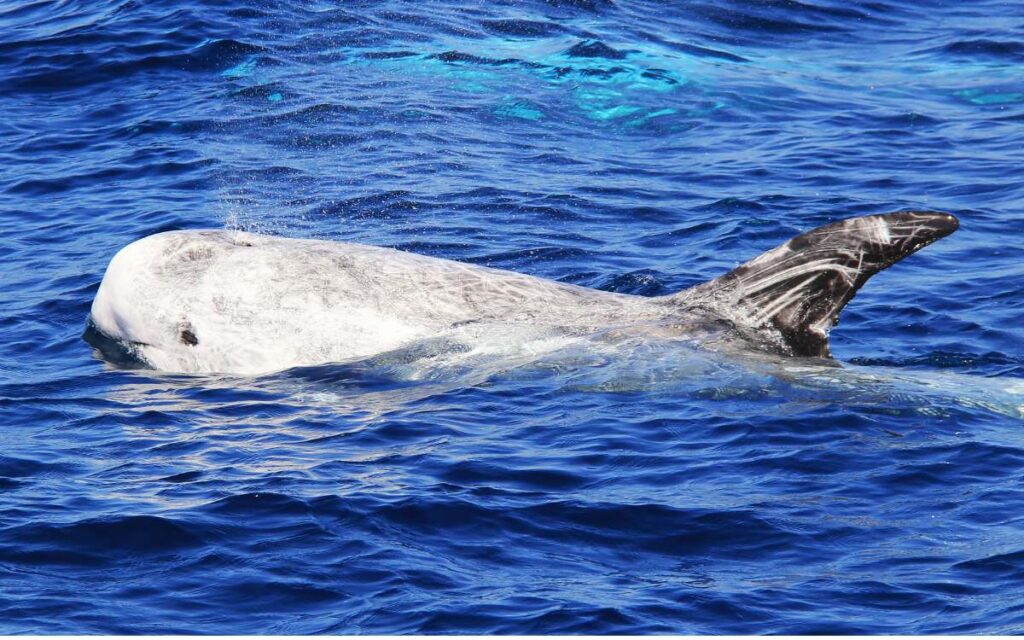
Striped Dolphin (Stenella coeruleoalba): This dolphin is named for the striking dark lines that run from the eye to the anus. It is social and can be observed in groups, often interacting with other dolphin species.
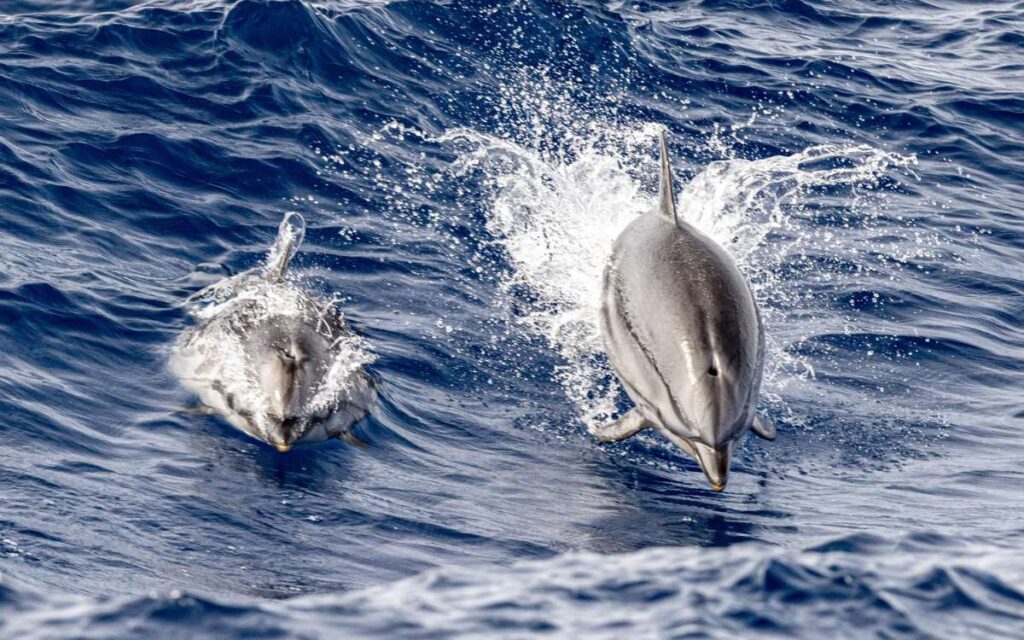
Atlantic Spotted Dolphin (Stenella frontalis): With a unique spotting pattern that varies from individual to individual, this dolphin is distinguished not only by its beauty but also by its gregarious and acrobatic behaviour.
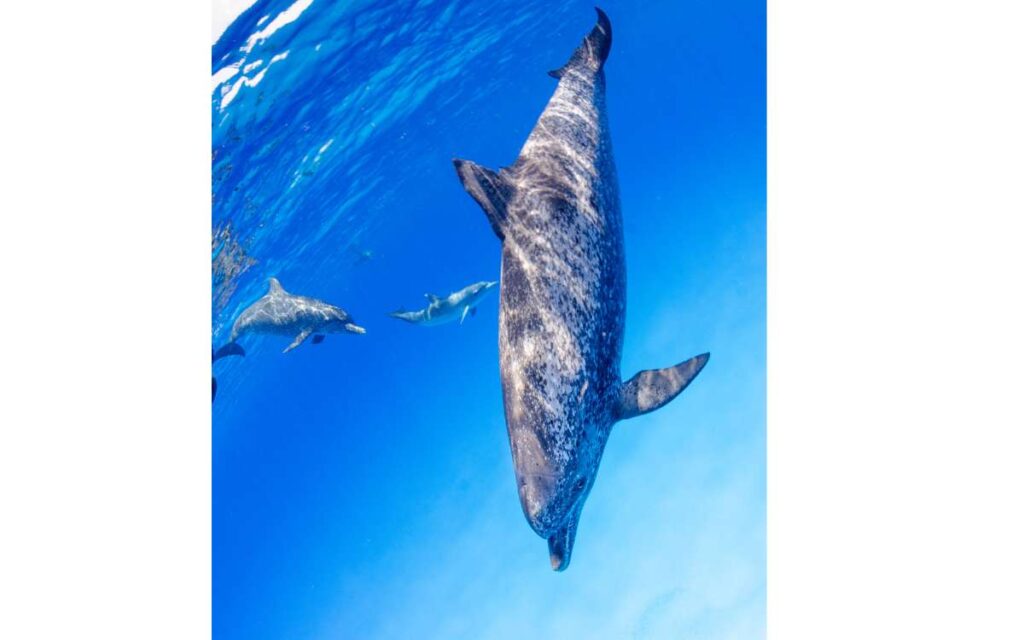
Spinner dolphin (Stenella longirostris): Famous for its spinning jumps out of the water, the spinner dolphin uses these acrobatics not only as a game, but also to communicate and cleanse itself of parasites. Its slender body and long beak are distinctive.
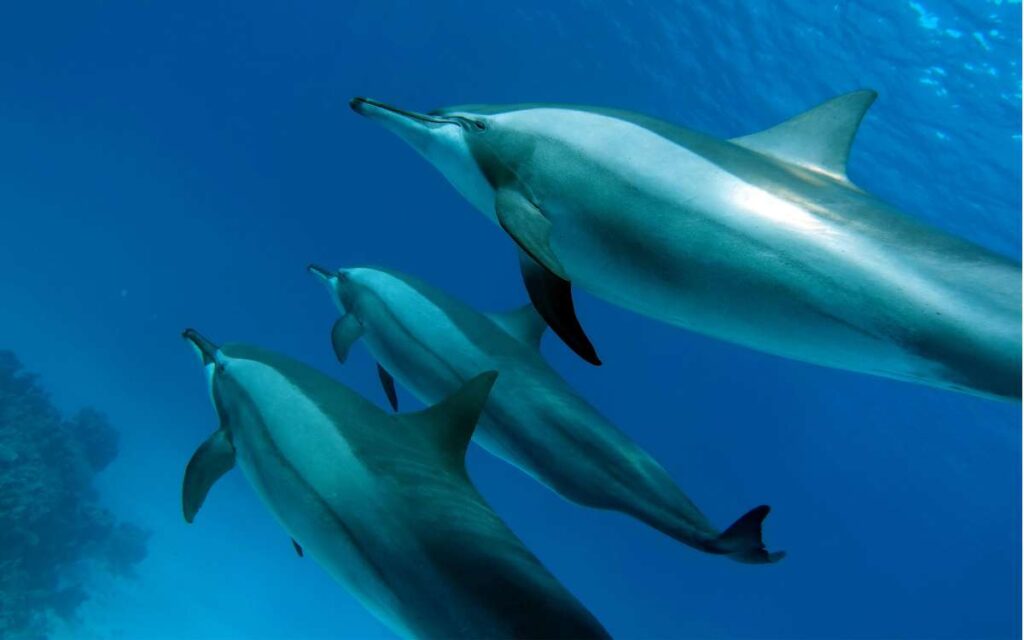
Long-snouted dolphin (Delphinus capensis): Although we have already mentioned a dolphin with spinner-jumping characteristics, it is important to note that the term “long-snouted dolphin” is often confused. To clarify, long-snouted dolphin refers specifically to Stenella frontalis, also known as the Atlantic spotted dolphin, mentioned above, characterised by its spotting pattern and social behaviour.
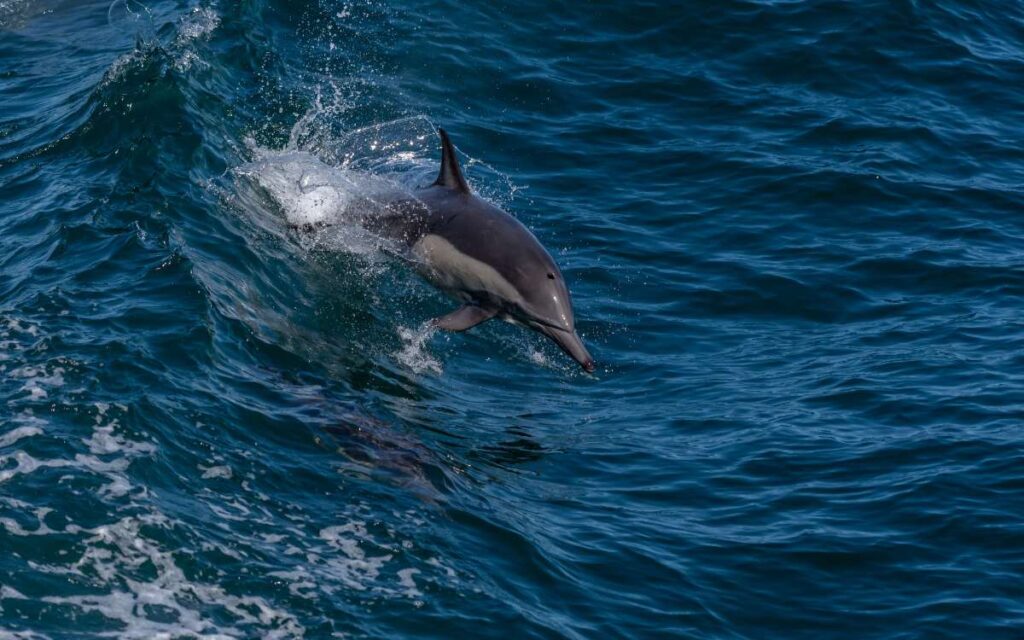
And as an extra type of species, although it is not characterised as a dolphin, but it is mixed and shares many characteristics with dolphins, including its social nature. The Pilot Whale (Globicephala macrorhynchus) although commonly called pilot whale on our coasts of Fuerteventura, the pilot whale is distinguished by its large size, round head and dark body.
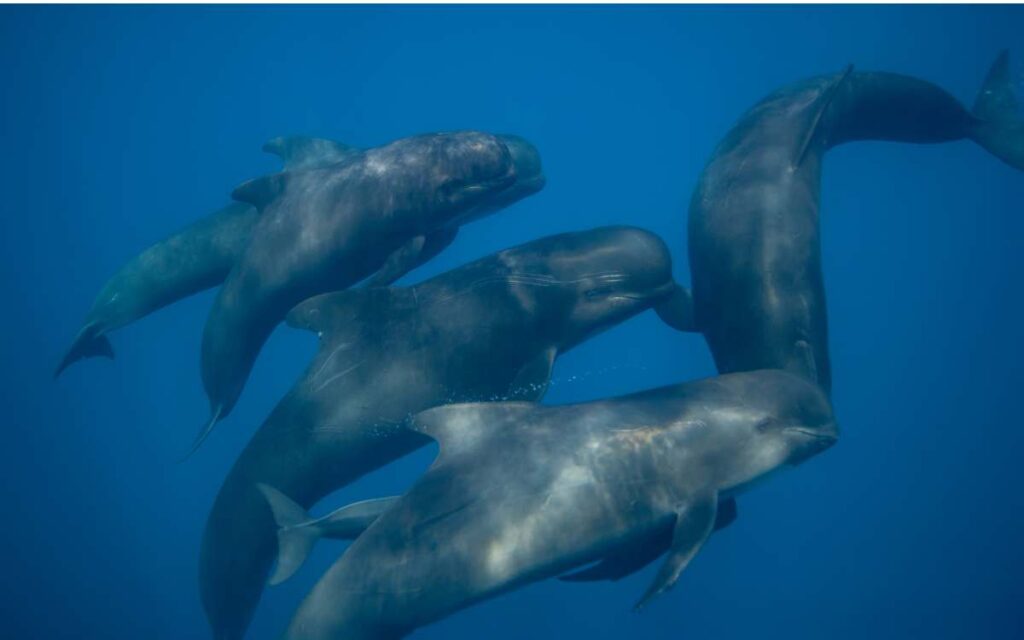
To learn more about these fascinating creatures and experience them up close, discover our specialised Magic and Sailing excursions.
Habitats and behaviour
Fuerteventura’s dolphins enjoy a diverse habitat, from the shallow waters to the impressive underwater canyons that surround the island. They are extremely social beings, often seen working together to hunt or simply enjoying each other’s company. A fascinating behaviour is their use of echolocation to communicate and navigate, a true demonstration of their intelligence.
Best times to see dolphins
All year round and at any time of the year you can see our friends the dolphins on our coasts in the south of Fuerteventura, the sea conditions are ideal for them and for visitors. Although in winter months where the water is a little cooler, the likelihood of encountering large, playful groups increases significantly.
How to see dolphins in Fuerteventura
Choosing a responsible tour is essential. At Magic and Sailing, we are committed to marine conservation, ensuring that our excursions are not only unforgettable but also environmentally friendly. We recommend always keeping a safe distance and not trying to touch the dolphins, respecting their space and freedom.
Dolphin conservation
Conservation is a fundamental pillar of dolphin watching. Through responsible practices and education, we can ensure that future generations will also enjoy these encounters. Participating in excursions that support marine life conservation and education is a practical way to contribute.
Fuerteventura offers a unique window into the world of dolphins, where each encounter teaches us more about these extraordinary creatures. By choosing responsible and educational experiences, we contribute to the preservation of their habitat, ensuring that they remain a symbol of the island.
DOLPHIN AND WHALE WATCHING EXPERIENCE
Frequently asked questions
- Is it safe to swim with dolphins in Fuerteventura?
- For safety and conservation reasons, we recommend watching the dolphins from a boat. This ensures both your safety and that of the dolphins.
- What is the best time of day to see dolphins?
- All year round and at any time of the year you can see our friends the dolphins on our coasts in the south of Fuerteventura, the sea conditions are ideal for them and for the visitors.
- Do I need special equipment to spot dolphins?
- A good pair of binoculars can enhance your experience, but the most important thing is to choose a good tour, such as those offered by Magic and Sailing.
- How can I differentiate between the types of dolphins?
- Our expert guides will help you identify the different species during the excursions.
- What conservation measures can I support during my visit?
- Participating in responsible and educational excursions is an excellent way to contribute to dolphin conservation.
- We saw a majestic Fin Whale in Fuerteventura - 6 de May de 2024
- What kind of dolphins you can see in Fuerteventura? - 5 de March de 2024

